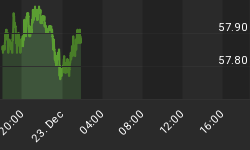Sterling has fallen to its lowest level against the greenback in 14 months, and is sliding against the euro, as the markets assume that interest rates in the US are headed upward while those in the UK are headed downward - perhaps as early as this Thursday.

The trigger for this marked shift in expectations on the UK rate outlook was last week's revision to Q1 GDP data, which took growth down from 0.5% on the quarter to 0.4% - a two-year low - as household spending came in far weaker than first thought with a mere 0.1% expansion. The annual rate of GDP growth was revised down to 2.1% from the initial 2.7%. The market was also spooked by the CBI distributive trades survey, which showed retail sales plummeting in June. (However, the data were strongly distorted by a very strong showing in June 2004, thanks to the Euro soccer tournament that month, and the CBI survey tends to be volatile.) In addition, last week brought the news that the Nationwide building society's house price index fell 0.2% in June, bringing the annual rate of price increase to 4.1% - a nine-year low, and down from nearly 20% a year earlier. The GfK consumer confidence index slid to a six-month low of -3 from -1 in May. Finally, the manufacturing sector contracted again in June, with the CIPS/NTC purchasing managers' index (PMI) still below the expand/contract level, at a reading of 49.6. Still, this was better than the 47.0 reading in May, a hint that maybe the worst is over - and an example of the "mixed data" problems now facing the nine voting members of the Monetary Policy Committee (MPC).

The Committee raised rates between November 2003 and August 2004, in order to combat strong consumer borrowing and house price inflation. At the June meeting, two of the nine members of the MPC had voted for a rate cut, and one of them was the BoE's chief economist. However, the other members likely will want to see more definitive signs that any risk of a resurgence in borrowing is passed, before cutting again - especially the two who had actually voted for a rate hike as recently as April (and one of them again in May). BoE Governor King has been arguing that the recent cooling in the economy is a temporary slowdown, not the start of a more pronounced contraction. Consumer spending was at a near-standstill in Q1, but King has argued that the retail sector slowdown shows no signs of having spread to services like holidays; and has also pointed out that there are still upside inflation risks from faster broad money growth, labor costs, and import costs.
If last week's "mixed data" weren't enough to give the MPC members pause for thought, today's CIPS//NTC service sector PMI numbers certainly will. The index of service sector activity jumped to a higher-than-expected 55.8 in June from 55.1 in May, helped by the sharpest rise in new business in three months. Overall, it looks as if Q2 service sector growth held its own quite nicely, implying overall GDP growth for the quarter will at least equal, and perhaps be stronger than, seen in Q1. In addition, strong demand and the recent spike in oil prices combined to drive up service-sector inflation, with the prices index coming in at 52.6 in June, compared with 51.9 in May.
The markets seem to be paying too much attention to "big" numbers like the GDP revision (itself based in large part on UPWARD revisions to previous years' GDP growth figures) and not enough to less-spectacular housing market and household consumption data. The latter are pointing to a stabilization of prices and consumption, not a slump. Yesterday's CIPS/NTC construction sector PMI picked up in June to its fastest pace in six months - 55.8, up from 52.6 in May - driven by growth in new business. And, residential construction grew modestly, coming in at 51.2, after three straight months of contraction. Data last week on consumer credit and mortgage lending showed that both actually rose more than expected in May. All told, consumption and the housing market still have life left in them.

Details of this week's MPC deliberations will be made public when the minutes of the meeting are published on July 20. We assume that the majority of the Committee will want to wait until at least to the August 3-4 meeting before opting to cut rates. By then, they will have had a chance to mull over June prices data (input and output prices on July 11 and CPI on July 12) as to whether the latest oil price spike is feeding through into the domestic pipeline anywhere. They will also have preliminary Q2 GDP data to contemplate, and the Bank will have just completed the update of its forecasts for the quarterly Inflation Report that will be released on August 10.
In fact, don't assume that an August rate cut is in the cards. While the next rate move is more likely to be downward than upward, the economic data are not nearly unequivocal enough to bet on a Q3 easing.
















